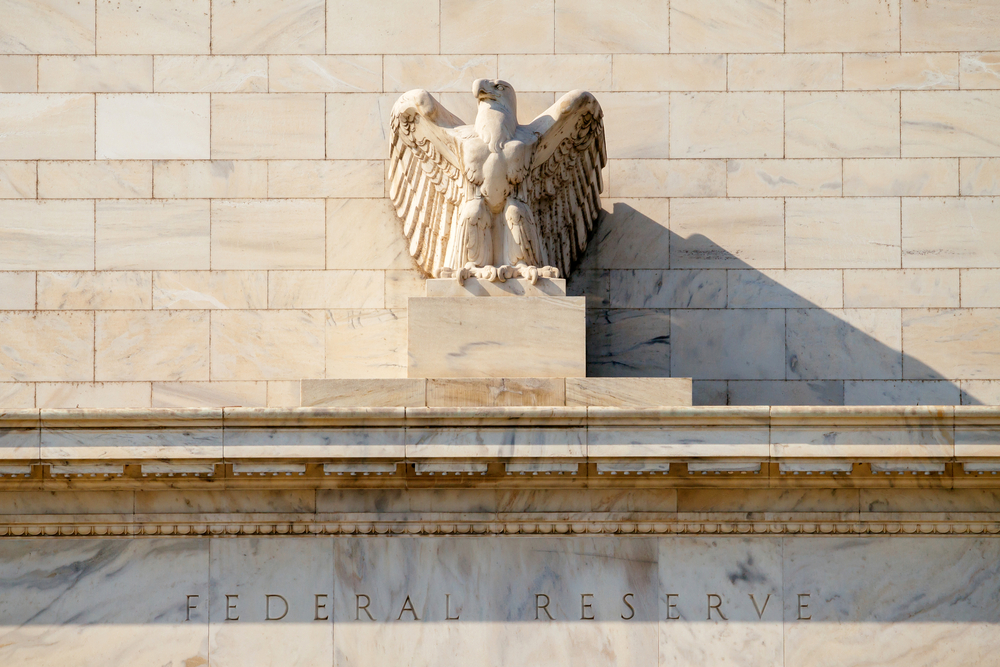
Monetary Policy & Inflation | US

Monetary Policy & Inflation | US
This article is only available to Macro Hive subscribers. Sign-up to receive world-class macro analysis with a daily curated newsletter, podcast, original content from award-winning researchers, cross market strategy, equity insights, trade ideas, crypto flow frameworks, academic paper summaries, explanation and analysis of market-moving events, community investor chat room, and more.
At the 12 June FOMC presser, Powell said while May’s low CPI was ‘a step in the right direction’, it had not given the Fed the greater confidence needed to start cutting.
The dot plot, which accounted for the low May CPI, showed only one 2024 cut and a narrower distribution, as I expected (Tables 1 and 3, Charts 1 and 2). Such narrowing is expected as meetings move closer to the end of the year and economic uncertainty dissipates.
Nevertheless, as June dot plots go, outside pandemic years, the 2024 June dot plot had the smallest range since 2017 when the FOMC was united around implementing a tightening cycle. That is, at the June meeting, the consensus around Powell’s inflation views grew stronger.
The stronger dot consensus aligns with projections showing no progress on core PCE. The Q4/Q4 forecast was at the same level as the last print in April at 2.8% (May is likely to be 2.6% based on CPI and PPI). Asked why the FOMC projected no progress on inflation and yet a cut in 2024, Powell explained policy was restrictive and therefore inflation was expected to slow in 2025.
Despite the higher for longer FFR trajectory, the June SEP still showed disinflation without a negative output gap or unemployment above its long-term value. Powell explained this reflected further supply side gains.
The macro backdrop explains why May’s low CPI did not reassure the FOMC. First, the median price CPI, a more reliable indicator of trend than core, remains ambiguous (Chart 3).
Second, Powell stressed the transmission of slower market rent inflation to shelter inflation in the consumer price indices was taking longer than expected (Chart 4). A recently published Boston Fed research note shows this is because the gap between market rent and shelter inflation is still wide. Also, while neither Powell nor the Boston Fed mentioned it, market rent indices are recovering, which is adding upside risk to shelter inflation. Shelter inflation is still high and will have to slow if overall inflation is to go back to the Fed’s 2% target (Chart 5).
Third, Powell believed ‘wages were still running above a sustainable path, which would be that of inflation and trend productivity.’ Powell was likely referring to the recent stabilization in wage growth (Chart 6).
Fourth, Powell expects GDP growth to remain strong. He saw a rotation from consumer spending, growing more slowly but still strongly, to corporate investment in equipment and intangibles (Charts 7-8). Although Powell did not mention it, he cannot have missed the worsening trade balance, a sign of overheating (Chart 12). Also, Powell stressed the overall labour market picture was ‘one of a strong and gradually rebalancing labor market’ and he was not seeing signs of unexpected weakness. This aligns with data showing a pick-up in NFP and unemployment (Chart 9).
The introductory presser statement included the usual sentence, ‘We will continue to make our decisions meeting by meeting, based on the totality of the data and its implications for the outlook and the balance of risks.’
Nevertheless, Powell was repeatedly queried on specific triggers for cutting. He stressed there was no specific labour market indicator, required number of good inflation prints, or specific inflation components that would drive Fed decisions. Rather, the Fed would consider the broad macro picture.
Asked if the policy stance was restrictive enough, Powell replied, ‘we would know over time’ (Charts 13-14). I think the data shows Fed tightening is not transmitting to the real economy (Charts 15-16).
What could prompt the Fed to end its easing bias? Likely no increase in confidence over an extended period, such as the next two quarters.
For now, the bottom line is the FOMC is united around Powell’s concerns over rising inflation risks.
I still expect no Fed cut in 2024, against the market pricing 1.8 cuts by December.
.
.
Spring sale - Prime Membership only £3 for 3 months! Get trade ideas and macro insights now
Your subscription has been successfully canceled.
Discount Applied - Your subscription has now updated with Coupon and from next payment Discount will be applied.